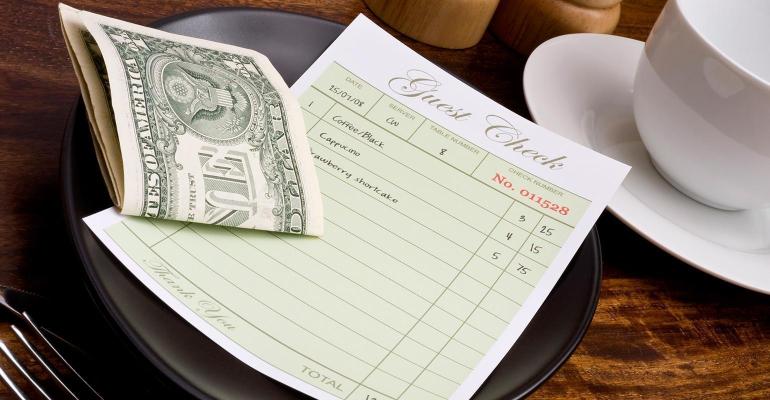The Bureau of Labor Statistics’ Consumer Price Index, released Wednesday morning, shows inflation is up 5% year-over-year, and 0.1% versus last month’s numbers. This marks the lowest CPI number since May 2021, which was also at 5%.
The biggest takeaway from the report is that food-away-from-home prices are up 8.8% year-over-year, increasing by 0.6% on the month. Food-away-from-home prices were the third biggest contributor to monthly inflation, behind transportation services (up 13.9%) and electricity (up 10.2%). Broken down by segment, limited-service menu prices are 7.9% year-over-year (0.5% month-over-month), while full-service prices are 8% higher versus March 2022 (0.7% month-over-month).
Conversely, food-at-home prices – mostly grocery – declined by 0.2% and are 8.4% higher versus last year. The food-at-home index fell for the first time since September 2020. This marks the first month in which restaurant pricing is outpacing grocery pricing since late 2021. Restaurants have tracked lower than food at home prices for over a year, which has made them an attractive wallet share option for many inflation-weary consumers.
In a note released Wednesday, Mark Kalinowski of Kalinowski Equity Research wrote, “The pricing advantage that restaurants enjoyed, in which grocery prices were going up at a noticeably higher rate, appears to be fully over.”
That said, much of the food-away-from-home uptick was impacted by the end of free school lunch programs. According to the National Restaurant Association, the price index for food at employee sites and schools increased by 131%.
“This component had been significantly dampened for much of 2021 and 2022, which BLS attributed to widespread free school lunch programs. As these programs expired, many students went from paying nothing to paying regular prices for school lunches,” the association notes. “As a result, this price index rose sharply in recent months, which is putting upward pressure on the overall food-away-from-home index. This component will continue to distort the overall Consumer Price Index for Food Away from Home until the fourth quarter of 2023.”
Still, elevated menu prices have, in part, contributed to some trade down activity. Quick-service restaurants enjoyed a 3% traffic uptick in Q1, for instance, while visits to full-service concepts dropped by 2% year-over-year. Further, lower check breakfast and morning snack dayparts have fully recovered from pandemic losses, according to Circana. Morning restaurant visits grew by 10% versus last year and are up by 2% versus February 2020. Conversely, lunch visits were slightly down, at negative 1%, while dinner traffic was down by 3% in February. And, higher-check full-service dinner visits – the segment’s busiest daypart – declined by 13%.
Kalinowksi notes that there is good news, however, in that most commodity cost pressures seem to be easing versus the environment just six months ago.
“Does this imply that March 2023’s +8.8% number will end up being the high-water mark for restaurant pricing? We shall see,” he wrote. “That said, restaurants may need to do some ‘catch-up’ pricing, so we expect this number to remain quite high by historical standards for the next three-to-six months at least.”
Contact Alicia Kelso at [email protected]





